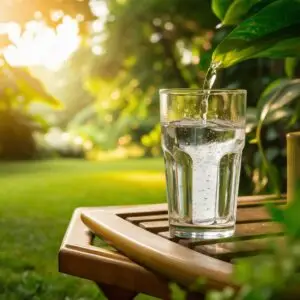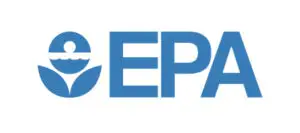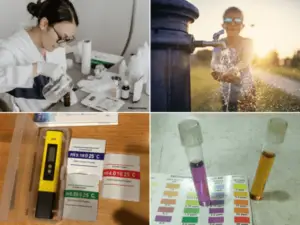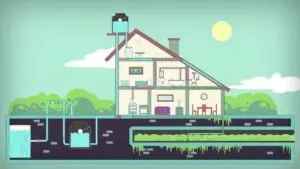Potable water is of great importance to the health and well-being of any community, so having access to it is of great importance. Plumbing plays a crucial role in ensuring that this indispensable resource is safely and efficiently delivered to our homes and establishments. A well-designed and maintained plumbing system not only facilitates the delivery of clean, safe drinking water, but also protects against contamination and ensures the operation of essential fixtures such as toilets, bidets, showers, and sinks.
Specific elements such as shower systems, shower heads, shower hoses and shower panels are also vital to maintaining water quality, ensuring proper and safe distribution. In this article, we will delve into both the importance of potable water and the plumbing systems that supply it. In addition, we will discuss the latest innovations and best practices in the repair and maintenance of these potable water systems, highlighting key aspects such as potable water savings or water quality, regulations, design and installation.
History of potable Water Systems
The history of potable water systems reflects human ingenuity in the quest for access to clean, safe water. Since the earliest civilizations, water has been essential to life and development. Ancient potable water systems date back to Sumerian and Egyptian civilizations, with aqueducts and canals to transport water from natural sources to populated areas.
In ancient Rome, hydraulic engineering reached its peak with aqueducts such as the Aqua Appia and Aqua Claudia, which transported large volumes of water to the city. Water quality was maintained by separating water sources from sewage and agricultural water. With the fall of the Roman Empire, these technologies degraded and potable water quality declined during the Middle Ages in Europe. However, advanced water management techniques continued to be developed in the Islamic world and in China. In the Song dynasty in China, complex water distribution networks were developed.

Aqua Claudia in Rome
The Renaissance and the Industrial Revolution marked a resurgence in potable water engineering. In the 19th century, modern water supply systems began to be built, including treatment plants to filter and purify water. These systems, which included pressure pumps, expansion tanks, pumps and hot water recirculating systems, were essential to ensuring that water reached homes efficiently.
Potable Water Saving Methods, Devices and Systems
Saving potable water is a top priority in today’s context of increasing demand and limited water resources. Implementing efficient methods, devices and systems not only contributes to the conservation of this vital resource, but also reduces the costs associated with potable water consumption and sewage treatment. There are several strategies and technologies that households can adopt to optimize the use of water.
One of the most effective methods of saving potable water is the installation of water-saving devices on kitchen sink faucets, bathroom faucets, and automatic irrigation systems. Faucet aerators, for example, mix water with air, which reduces water flow without compromising pressure or flushing efficiency. Similarly, low flow shower heads are designed to use less water without affecting shower quality. These devices are relatively inexpensive and easy to install, making them an affordable solution for any home.
As for toilets, low-flow or dual-flush models allow users to choose between a lower-volume flush for liquid waste and a higher-volume flush for solid waste. This system can significantly reduce potable water use compared to traditional toilets. In addition, there are retrofit devices that can be installed on existing toilets to improve their water efficiency, such as toilet flush valves.
Graywater collection and reuse systems represent another important innovation in saving water. Graywater is the sewage generated from activities such as washing clothes, showering, and using sinks, excluding toilet wastewater. These systems collect and treat graywater for reuse in non-potable applications, such as landscape irrigation or toilet flushing. This not only reduces the demand for water, but also reduces the load on sewage treatment systems.
The use of efficient irrigation systems, such as automatic irrigation systems and landscape irrigation controllers, is crucial for potable water conservation in gardens and landscaped areas. Drip irrigation systems, for example, deliver water directly to plant roots, minimizing evaporation and water waste. Additionally, irrigation systems with timers and soil moisture sensors can be set to water only when needed, preventing over-irrigation of potable water. These systems are especially beneficial in regions with arid climates or during periods of drought.

Implementing check valves and flow control valves in irrigation and plumbing systems is also critical to optimizing water usage, as they prevent unwanted water backflow and ensure that the flow remains consistent and efficient. Additionally, using water softeners and descalers can improve water quality in the home by reducing mineral buildup that can affect the efficiency of appliances and plumbing systems.
Adopting water-efficient appliances, such as washing machines and dishwashers connected to the water supply, can also make a big difference in potable water conservation. These appliances are designed to use less water without sacrificing performance. By choosing efficiency-certified appliances, such as those certified by the WaterSense label in some countries, consumers can make a significant contribution to household water savings.
Finally, education and awareness of water-efficient practices are key to fostering long-term behavior change. Awareness campaigns and educational programs can help people understand the importance of saving potable water and adopt more sustainable habits, such as turning off the tap while brushing their teeth or reducing the time spent in the shower.
This is why the implementation of water dispensers, automatic irrigation systems, water softeners and water softeners is of great importance for the sustainable management of this resource. Solutions range from the installation of water-saving devices to the reuse of gray water and the adoption of efficient technologies. Through these measures, households can reduce their water consumption, lower their bills and contribute to potable water conservation for future generations.
Rules and Regulations for plumbing in potable Water systems
Rules and regulations for plumbing in potable water systems are essential to ensure the safety, quality and efficiency of the water supply in homes and other buildings. These regulations are designed to protect public health, ensure responsible water use, and promote sustainable construction and maintenance practices. For example, in the United States, the United States Environmental Protection Agency (EPA) is the main entity that establishes these types of regulations in relation to drinking water. So below we will talk about some of the key aspects that these rules and regulations address.
First, regulations typically establish quality standards for potable water, ensuring that water supplied to homes is free of contaminants and safe for human consumption. These standards include the National Primary Water Quality Standards (NPDWR) and the National Secondary Water Quality Standards (NSDWR), which cover a wide range of parameters, such as the presence of bacteria, heavy metals, chemicals and other potential contaminants. . Health authorities and regulatory agencies, such as those implementing the Safe Drinking Water Act (SDWA), typically conduct periodic testing to ensure compliance with these standards.
Regarding the materials used in the installation of plumbing systems, the regulations specify the types of materials allowed for pipes, fittings and devices. For example, in many locations, the use of lead pipes is prohibited due to the health risks associated with lead contamination, in compliance with the Lead and Copper Rule (LCR). Instead, materials such as copper, PVC, CPVC and PEX, which are safe and durable for potable water systems, are preferred. Additionally, regulations may require the use of certified materials and components, such as Pipe Nameplates, to ensure their quality and safety.

Environmental Protection Agency
Installation standards are another crucial part of plumbing regulations. These standards detail how pipes, fittings and devices should be installed to ensure a safe and functional plumbing system. They include specifications for proper spacing between potable water pipes and wastewater pipes, minimum depth of buried pipes, and connection and sealing methods. For example, in Canada, these rules help prevent problems like cross-contamination and leaks, and are aligned with the National Plumbing Code of Canada (NPC).
Another important area of regulations is the prevention of backflow contamination, which occurs when water flow is reversed due to a pressure drop, which can lead to contamination of the potable water supply. Regulations typically require the installation of backflow prevention devices, such as check valves or atmospheric backflow prevention devices, in situations where there is a potential risk of backflow, governed by the Surface Water Rule (SWTR) and the Water Rule. Underground (GWR). In addition, the Guide to the Quality of Drinking Water in Canada (GCDW) provides additional guidelines to ensure that water systems meet quality and safety standards, reinforcing the importance of having devices such as emergency shut-off valves, which allow control water flow in critical situations.
Regular maintenance and inspection of potable water systems is also regulated to ensure their proper functioning and longevity. Regulations may require periodic inspections by certified professionals to verify system integrity and detect potential problems before they become serious failures. Additionally, requirements can be established for cleaning and maintenance of critical components, such as water tanks, water filters, and heating systems.
Finally, the training and certification of plumbers and other construction professionals are regulated aspects to ensure that installation and maintenance work is performed in accordance with quality and safety standards. In many countries, plumbers must pass certification exams and meet continuing education requirements to maintain their licenses, ensuring they are up to date with the latest technologies and practices in the plumbing field.
Water Quality Testing and Monitoring
Potable water quality testing and ongoing monitoring are essential to ensure that water supplied to homes and other facilities is safe for human consumption. Quality can be affected by biological, chemical and physical contaminants, so public health authorities and water suppliers implement rigorous testing programs.
Water quality is assessed by analysis of parameters such as pathogenic microorganisms, toxic chemicals, heavy metals and turbidity. Microbiological testing is crucial to detect disease-causing bacteria, viruses and parasites. For example, detection of fecal coliforms and E. coli indicates fecal contamination, posing a risk to public health. In addition, chemical analyses are performed to detect pesticides, volatile organic compounds and heavy metals such as lead and mercury to ensure that water is safe for consumption.

Water quality monitoring is an ongoing process. Potable water distribution systems must be monitored regularly to detect changes. This includes sampling from the water source to consumers’ taps, ensuring that water meets quality standards at all points. In this context, the use of water meters and water counters is critical to quantify consumption and detect irregularities in flow.
The use of potable water monitoring systems, leak detectors and in-line sensors has become essential. These devices measure parameters such as pH and turbidity continuously, allowing operators to detect deviations quickly. In addition, industrial water filters are crucial to remove contaminants before water reaches the distribution system.
Transparency and communication with the public are critical; suppliers must inform consumers about water quality, including test results and any violations. Purge valves also play an important role in maintaining potable water quality by allowing for the removal of sediment and contaminants that have built up in the system.
In emergency situations, such as outbreaks of waterborne diseases, it is vital to act quickly to protect public health. In conclusion, water quality testing and monitoring are vital processes to ensure that the water supplied is safe and of high quality, integrating technologies and practices that guarantee its effectiveness.
Design and Installation of a potable Water Supply System
The design and installation of a potable water supply system is a fundamental task to ensure a safe and efficient supply of water in any building. This process involves a number of technical and regulatory considerations to ensure that the system meets quality, safety and efficiency requirements.
The design of a potable water supply system begins with a detailed assessment of the water needs of the building or dwelling. This includes calculating the flow rate required to meet the water demand of all fixtures such as faucets, showers, toilets and sinks. The design must consider factors such as the number of occupants, intended use and consumption patterns to properly size the pipe connections and system components.
Once the demand is determined, the potable water source and distribution system are chosen. In urban areas, potable water usually comes from a public supply, while in rural areas it may be necessary to install a well or cistern. The distribution system includes pipes that transport water from the source to the points of use in the building. It is critical to select piping materials that best maintain drinking water quality and local regulations, such as copper pipe, PVC pipe, CPVC pipe, and multilayer pipe. In addition, pipe adapters should be used to ensure proper connections between different types of pipes.

The installation of the system must strictly follow local rules and regulations to ensure the safety and effectiveness of the system. This includes proper placement of pipes to avoid problems such as cross contamination and maintaining minimum distances between potable water and wastewater pipes. In addition, shut-off valves, mixing valves, filters, and backflow prevention devices must be installed to protect water quality and allow for proper system maintenance.
Finally, it is essential to perform pressure and leak tests before putting the system into operation to ensure that all connections are secure and the system is functioning properly. Water pumps are essential to maintain proper pressure in the system, especially in multi-story buildings. Proper design and installation ensure a reliable supply of potable water and contribute to the durability and efficiency of the system over time, including elements such as pressure tanks that help regulate the flow of water.
Challenges and Solutions in Rural potable Water Supply
Potable water supply in rural areas presents a number of unique challenges due to the dispersion of housing, lack of infrastructure, and economic constraints. These challenges require innovative solutions tailored to the specific conditions of rural areas to ensure adequate access to safe water.
One of the main challenges is the dispersed geography of rural areas, which makes it difficult to install extensive and inexpensive distribution networks. Instead of centralized systems, individual systems such as wells and cisterns are often used. However, these systems may face problems such as contamination of potable water sources due to the proximity of agricultural or industrial pollution sources. The solution to this problem may include installing filtration and disinfection systems at the point of use, as well as implementing wastewater management practices to protect water sources.

Another significant challenge is the lack of financial and technical resources to build and maintain adequate water infrastructure. Solutions include promoting low-cost, easy-to-maintain technologies such as submersible well pumps, rainwater harvesting systems, water filters, electric water heaters, and gas water heaters. In addition, tankless water heaters are an efficient option that can be used to provide hot water continuously, without the need for large reservoirs.
Water quality is also a concern in rural areas, where regular testing and monitoring may be limited. Community education plays a crucial role in promoting hygiene practices and conducting basic testing for common contaminants. In addition, partnerships with non-governmental organizations and government agencies can provide resources and technical support to improve potable water quality and infrastructure.
Finally, sustainability is key to addressing these challenges. Solutions must include strengthening local capacities for maintaining potable water systems and implementing integrated water resource management approaches. In this context, solar pumping systems are presented as a viable alternative to provide renewable and sustainable energy in water pumping, reducing costs and promoting the use of natural resources. Promoting community participation in water resource planning and management ensures that solutions are appropriate to local needs and foster a sense of ownership and responsibility among residents.
Technologies used in water systems
Technology has revolutionized the supply of potable water, offering innovative solutions that improve the efficiency, quality and sustainability of water systems. These innovations are especially important in a context of increasing water demand and environmental challenges.
One of the most notable innovations is the use of real-time water monitoring systems. These systems use sensors and Internet of Things (IoT) technologies to continuously measure water quality, flow and pressure in pipes. This allows operators to proactively detect problems, such as leaks or contamination, and take action quickly to resolve them. In addition, real-time data collection helps optimize potable water use and better plan infrastructure maintenance.
Water treatment systems have also advanced significantly. Reverse osmosis and advanced filtration technologies make it possible to remove specific contaminants, such as heavy metals and chemicals, ensuring that water meets quality standards. In this regard, water purifiers and tap water filters, as well as countertop water filters and under-sink water filters, are increasingly used options to ensure that the potable water we consume is safe and of high quality, especially in areas where groundwater is contaminated.
Another important innovation is the development of smart irrigation systems that use humidity sensors and automation technology to optimize water use in agriculture. These systems can automatically adjust irrigation based on weather conditions and plant needs, which not only saves water but also improves agricultural productivity.
In addition, hot and cold water dispensers and filtered water dispensers have gained popularity in homes and offices, providing immediate access to quality water without the need to boil or buy bottled water. These devices are a practical and sustainable solution that reduces the use of plastics and improves the quality of available water. In this context, smart water controllers and smart shower systems are also emerging as effective tools to manage potable water consumption and promote more sustainable habits at home.
The integration of efficient water heating systems, such as solar water heaters, also contributes to the sustainability of the potable water supply. These systems use renewable energy to heat water, reducing dependence on fossil fuels and minimizing environmental impact.
Education and Awareness
Education and awareness on responsible use of water are essential to foster sustainable practices in the community. As the population grows and the demand for water increases, it is crucial that citizens understand the importance of conserving this vital resource.
Educational campaigns can address topics such as the importance of using sensor faucets, touch faucets, and water-saving systems at home. These technologies not only make water use easier, but also help reduce waste. For example, quick-closing faucets and faucet aerators are effective tools to decrease potable water consumption without sacrificing comfort.
In addition, it is vital to educate the population on the importance of wastewater management and greywater separation. Reusing greywater for garden irrigation and cleaning can significantly reduce demand for potable water and contribute to the sustainability of supply.
Training in efficient irrigation techniques, such as the use of watering hoses, spray guns, and drip irrigation systems, can help farmers and gardeners maximize water use in their crops and gardens. These practices not only preserve water, but also improve soil health and plant productivity.
Conclusion
In conclusion, the provision of safe potable water is a fundamental aspect of public health and community well-being. Through a comprehensive approach that includes the proper design and installation of plumbing systems, water quality treatment and monitoring, and education on efficient potable water use, we can ensure that this vital resource is available and safe for all.
Technological innovations such as real-time monitoring systems, filtered water dispensers, and smart irrigation systems offer promising solutions to address water supply challenges. At the same time, awareness and education are essential to foster a culture of potable water conservation and ensure a sustainable future for generations to come.
With a collective commitment to responsible water management, we can protect this essential resource and ensure that it remains accessible and of quality for all. Collaboration between governments, organizations, industry professionals, and citizens is key to building a safe, efficient, and sustainable potable water supply system.